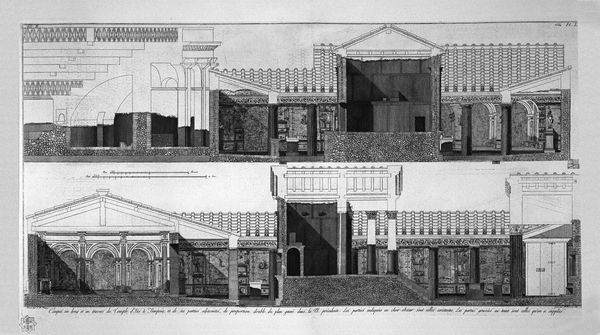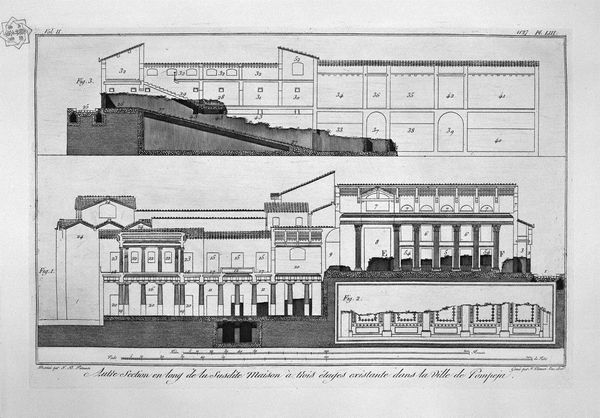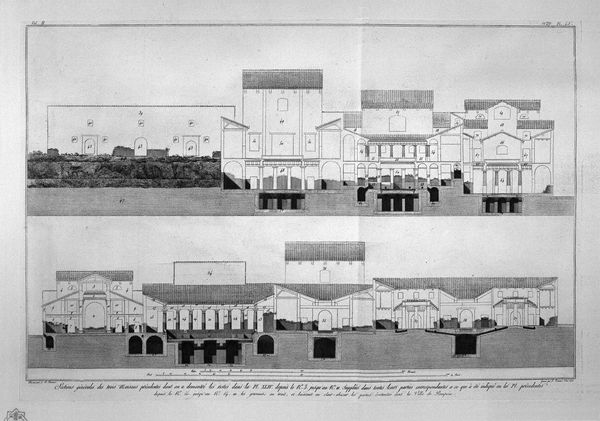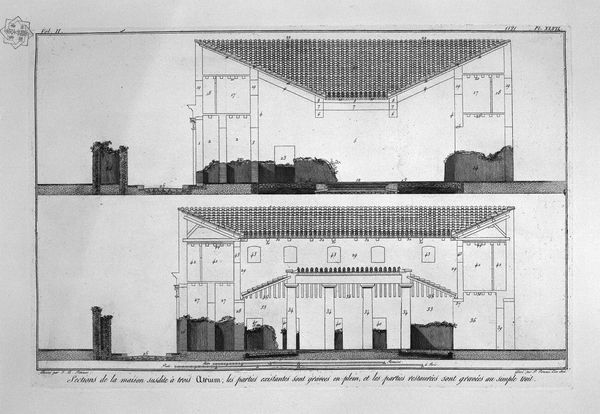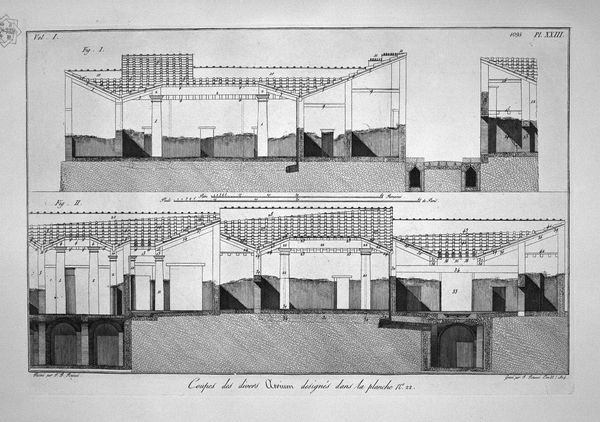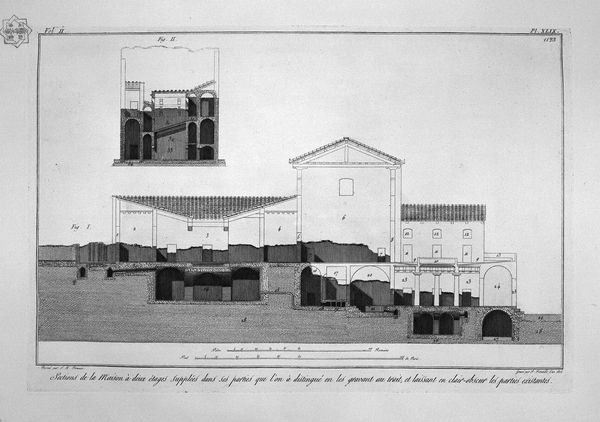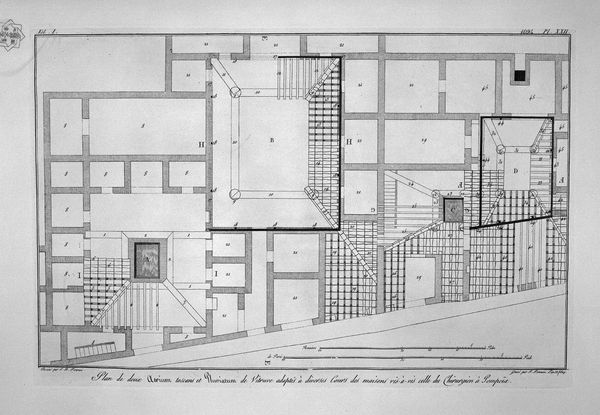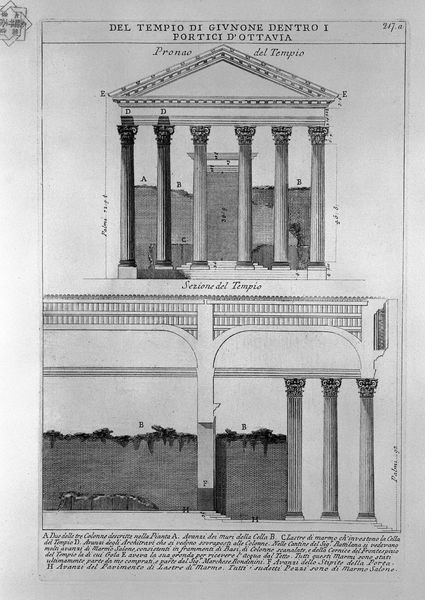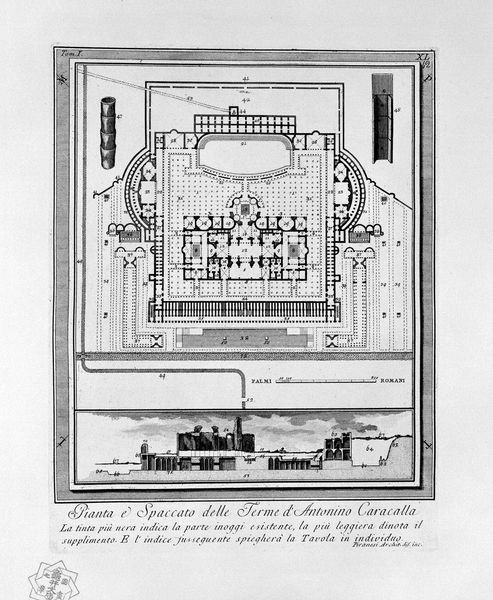
drawing, etching, architecture
#
architectural sketch
#
drawing
#
etching
#
architectural plan
#
landscape
#
etching
#
geometric
#
ancient-mediterranean
#
arch
#
elevation plan
#
architectural drawing
#
architecture
Copyright: Public domain
This is Giovanni Battista Piranesi's "Second floor plan of the three-story house," made sometime in the 18th century. It's an etching, a printmaking process where lines are incised into a metal plate, inked, and then pressed onto paper. Piranesi was not just an artist, but also an antiquarian, deeply interested in the material culture of ancient Rome. This print exemplifies his fascination with architectural structures. The act of meticulously drafting and etching these plans speaks to a culture of documentation, typical of the Enlightenment. Etchings like this one circulated widely, helping to shape the architectural imagination of the period. Consider the labor involved - the precise drawing, the acid-etching, the inking, and printing - all reflecting a pre-industrial mode of production. It’s a handcrafted approach, a far cry from today’s digital rendering. So, while the image itself depicts ancient architecture, the print reveals a great deal about 18th-century modes of production, the value placed on classical knowledge, and the meticulous craft involved in disseminating that knowledge.
Comments
No comments
Be the first to comment and join the conversation on the ultimate creative platform.
